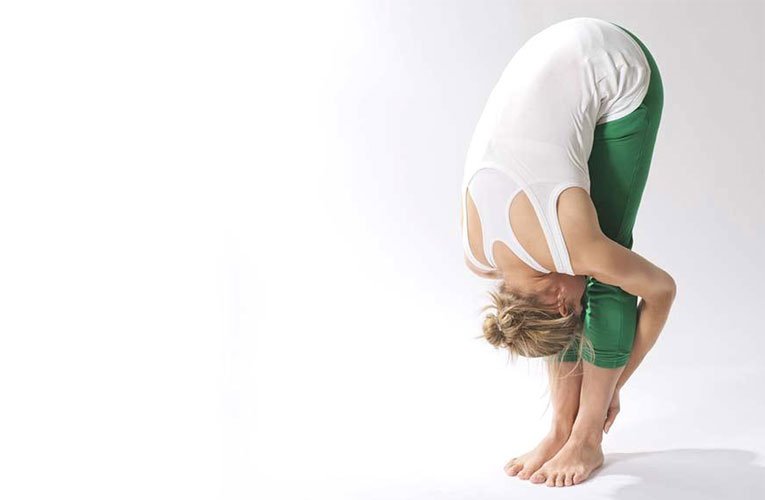1.5K
Padahastasana Yoga: The Sanskrit term ‘Pada’ means ‘foot’ while the other Sanskrit term ‘Hasta’ connotes ‘hand’. While in Padahastasana, you will have to catch hold of your toes with the hands. Hence it is known as the ‘Hands-to-Feet Posture).

Methodology of Padahastasana yoga
- Stand upright.
- The feet must be kept close together and in a parallel level.
- The heels must remain six inches apart.
- Inhale.
- Raise your hands overhead.
- The palms must be kept outwards.
- Exhale.
- Bend your trunk and head.
- You should bend from your waist to the farthest limit.
- The upper arms must be touching your ears.
- Inhale slowly but deeply.
- Gradually bend forward from the waist onwards.
- Don’t bend the knees.
- Ensure that your upper arms are touching the ears.
- Start exhaling when your arms stretch overhead.
- Keep on exhaling and keep on bending the trunk and the head forward from the waist.
- Hold the toes with your middle and index fingers as well as the thumbs.
- As you complete exhalation, hold out the breath.
- At this juncture, pull the toes.
- Simultaneously place your head at the space between the knees.
- Don’t bend the legs or the knees; keep them stiff and straight.
- Stay put in this position.
- Now inhale slowly and return to the erect position.
Advantages of Padahastasana yoga
- There is augmented flow of blood to the neck, shoulders, back, waist, hips, claves, ankles and the back portions of the thighs.
- The sciatic nerve gets pulled.
- Moreover, the thigh and leg ligaments as well as the tendons get stretched.
- The hamstring muscles (at the back of the thighs) also get exercised.
- The lateral muscles of the trunk are stretched.
- The posterior muscles right from the neck to the legs are pulled to their optimum levels.
